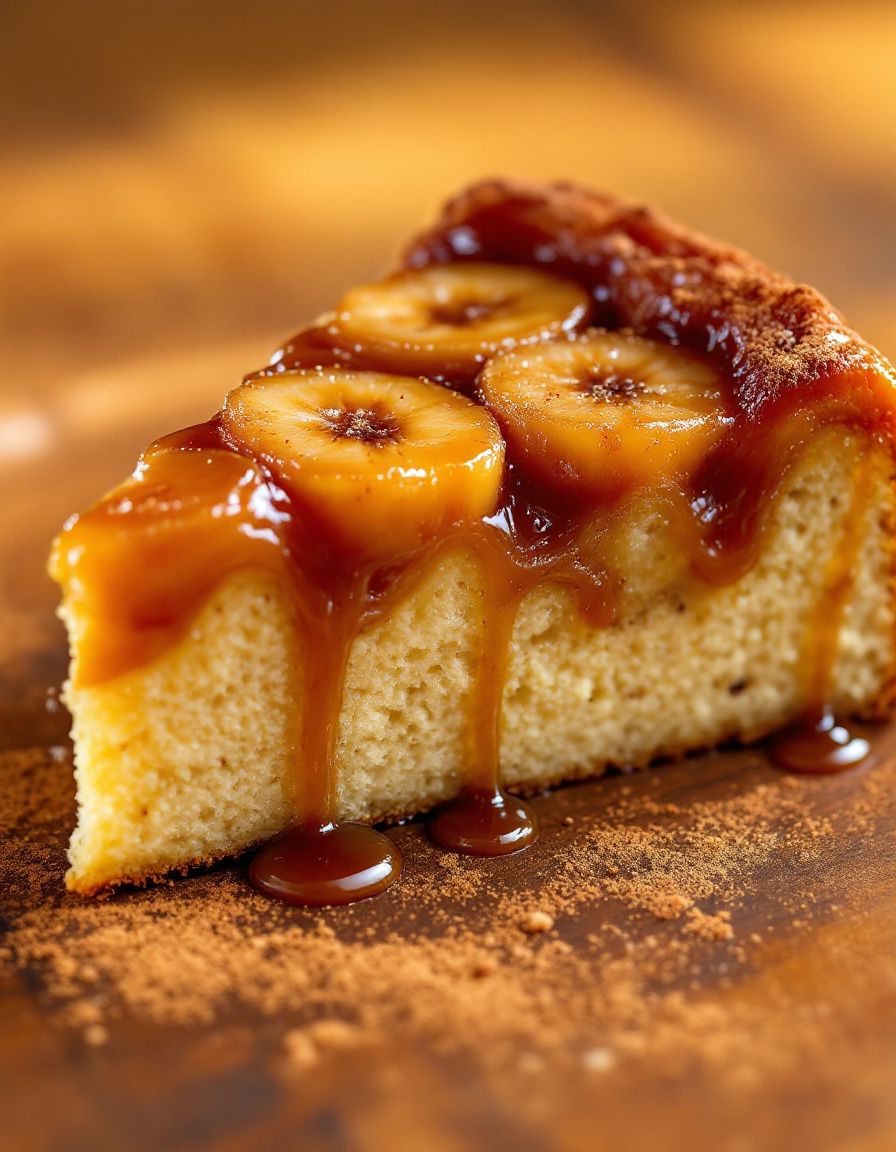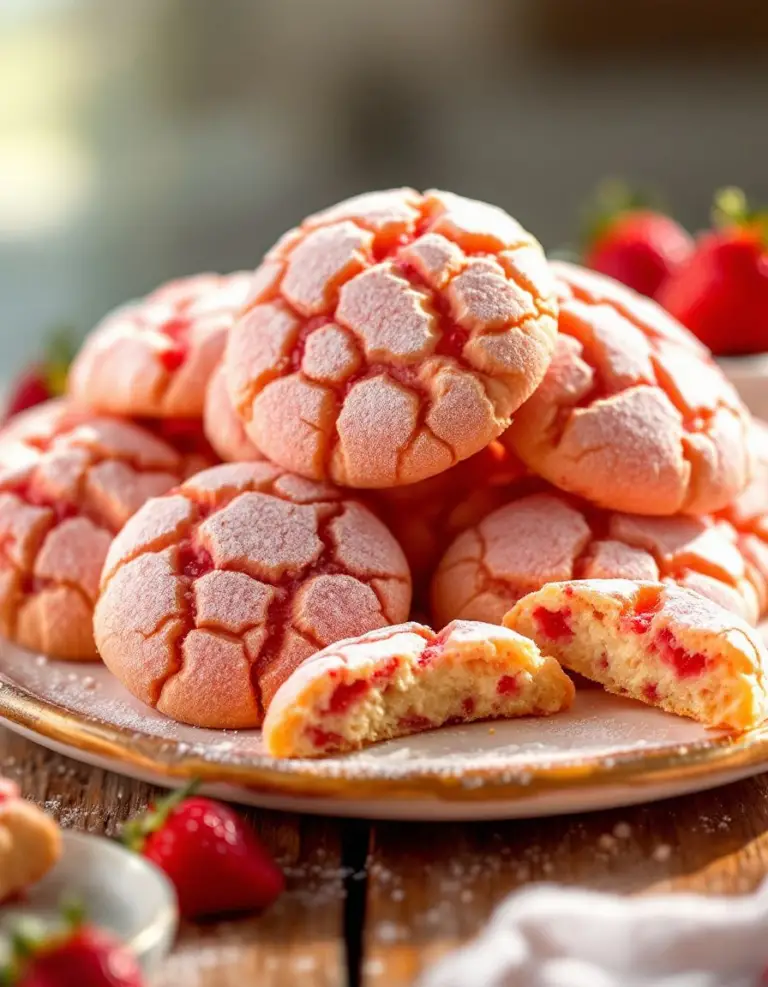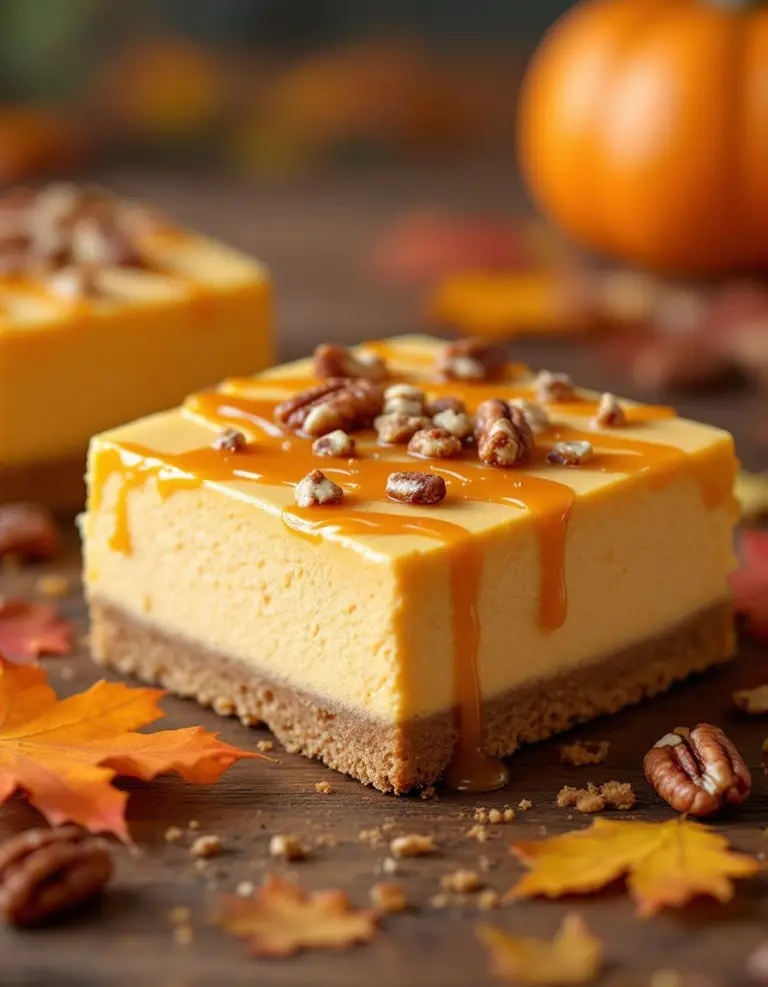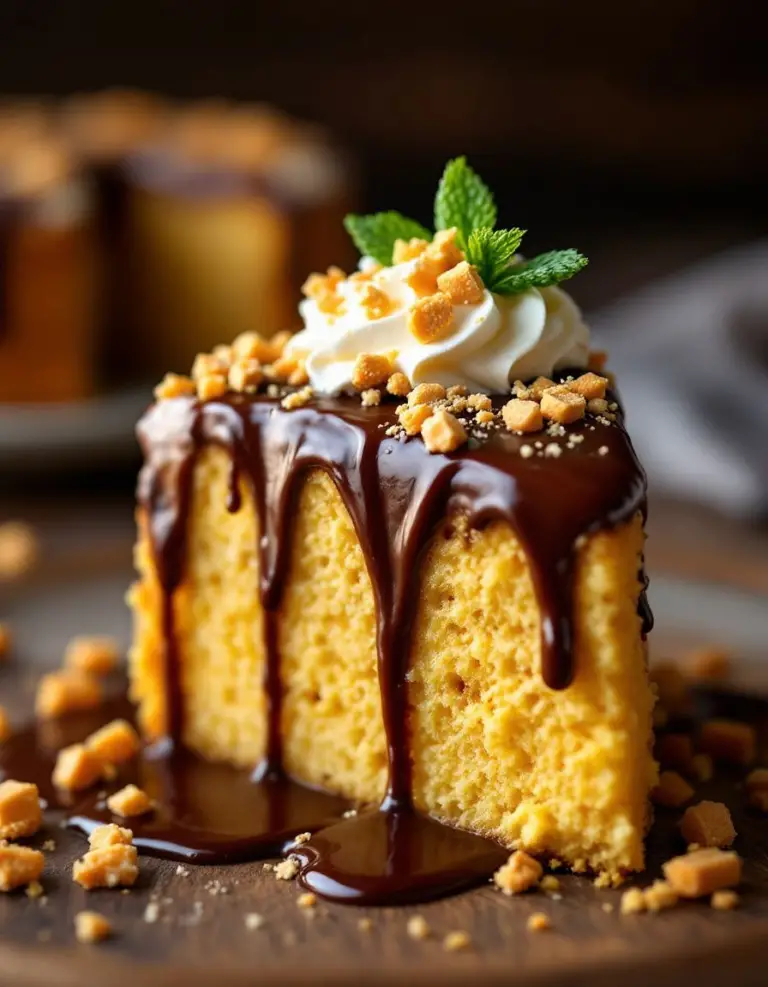Easy Banana Upside-Down Cake – Perfect Caramel Dessert

Banana Upside-Down Cake – Easy & Delicious Caramel Treat!
Banana Upside-Down Cake is a delightful dessert that brings the sweetness of ripe bananas to the forefront, enveloped in a buttery caramel sauce. This easy recipe transforms simple ingredients into an impressive cake that is perfect for any occasion. The allure of this cake lies not only in its delicious flavor but also in the stunning presentation, which will make it the centerpiece of your dessert table.
As you slice into this moist cake, the luscious caramel sauce glistens, revealing the tender banana slices that have become perfectly caramelized. With each bite, you’ll experience a blend of flavors and textures – the creamy bananas, fluffy cake, and rich caramel create an irresistible treat that tantalizes your taste buds. Not only does this banana upside-down cake taste divine, but it is also incredibly easy to make, making it a favorite for both novice and seasoned bakers alike.
Quick Recipe Highlights
- Flavor Profile: This cake is a delightful combination of sweet bananas and rich caramel, offset by the lightness of the cake, creating a balanced taste experience.
- Texture: The cake has a moist and tender crumb that contrasts beautifully with the sticky and slightly chewy caramelized topping.
- Aroma: The aroma that fills your kitchen while this cake bakes is heavenly, with hints of caramel and fresh bananas wafting through the air.
- Visual Appeal: The presentation of this cake is stunning, with a glossy caramelized banana topping that makes it both enticing and elegant.
- Skill Level Needed: Ideal for all skill levels, this recipe is straightforward enough for beginners while also satisfying for more experienced bakers.
- Special Equipment: You will need a round cake pan and an oven, making it accessible for anyone who enjoys baking.
Recipe Overview
- Difficulty Level: This easy banana upside-down cake requires minimal baking skills, making it perfect for anyone looking to impress without extensive culinary training.
- Category: This dessert fits into several categories, including party treats, after-dinner desserts, and cozy family gatherings.
- Cuisine: Originating from classic American baking traditions, this cake has become a beloved favorite across many homes.
- Cost: The ingredients are budget-friendly, usually totaling around $10, making it an economical choice for delicious desserts.
- Season: Bananas are available year-round, making this cake a great option any time you want a sweet treat!
- Occasion: Perfect for birthdays, gatherings, or simply to enjoy with a cup of coffee in the afternoon.
Why You’ll Love This Recipe
The taste and texture of this banana upside-down cake are truly comforting. The combination of fluffy cake and soft, caramelized bananas creates a satisfying mouthfeel that keeps you coming back for more. Each bite delivers a wave of sweetness, accentuated by the rich caramel that adds depth and richness. It’s an extraordinary way to use overripe bananas, preventing waste while indulging in something special.
In addition to its appealing flavors, this recipe offers remarkable convenience. The preparation is quick, allowing you to whip this dessert up in under an hour. Even the busy home cook can manage this delightful cake, making it ideal for last-minute celebrations or spontaneous cravings for something sweet. Lastly, you can easily prepare it ahead of time and impress guests effortlessly.
From a nutritional perspective, bananas are rich in potassium and offer dietary fiber, making this cake a more nutritious option compared to other sugary desserts. While indulgent, the use of bananas provides some health benefits alongside the sweet enjoyment of this dessert.
Socially, bringing this cake to gatherings is always a hit. It encourages sharing and compliments, creating a warm atmosphere where food fosters connections among friends and family. This simple cake is conversation-starting, bridging gaps between guests and enabling people to share recipes, memories, and laughter.
Cost-effectiveness is another reason to love this recipe. With accessible ingredients and straightforward preparation, you can serve a crowd without breaking the bank. This delicious dessert on a budget keeps your food costs low while still providing a decadent treat for all to enjoy.
Historical Background and Cultural Significance
The banana upside-down cake has roots in early American baking traditions, evolving over decades to become a staple dessert beloved nationwide. It is said that the upside-down cake format dates back to pineapple upside-down cake, which became popular in the 1920s, where inverted cakes were a clever way to present fruit and caramelized sugar as an eye-catching feature.
Culturally, this dessert reflects the resourcefulness of home bakers who sought to utilize the ingredients they had on hand, particularly overripe bananas that might otherwise go to waste. This signifies a sense of frugality and creativity within cooking that mirrors the challenges faced during the Great Depression, leading to innovative baking solutions that resonate even today.
The evolution of the banana upside-down cake has seen variations pop up across different cultures, each incorporating local ingredients and flavors. You might find versions with different fruits, such as mangos or peaches, one that showcases cultural influences and reinterpretations rooted in regional ingredients.
Regional adaptations of this banana upside-down cake also highlight its travels and transformations. In some areas, spices like cinnamon or nutmeg are added, while others may include rum for additional flavor complexity. These variations enrich the original recipe, making it suitable for diverse tastes around the world.
Ingredient Deep Dive
Bananas
Bananas have a long history, originating from tropical Southeast Asia and spreading across the globe. They are not only a staple fruit but also come with significant nutritional benefits, providing potassium, vitamin B6, and fiber. When selecting bananas for this recipe, look for ripe ones with a few brown spots, as they will enhance the cake’s sweetness. Store bananas at room temperature, and if you want to speed up the ripening process, keep them in a paper bag. In terms of substitutions, you can use applesauce in a pinch for a healthier option, but the taste profile will change slightly.
Brown Sugar
Brown sugar, created by adding molasses to white sugar, adds not only sweetness but also a rich caramel flavor to desserts. Its historical significance is rooted in sugar production when molasses was a byproduct of sugar refining. Nutritionally, brown sugar contains trace minerals and provides moisture to the cake. When purchasing, choose sugar that feels moist; if it’s hard, you can soften it by placing it in a container with a slice of bread or an apple. As an alternative, coconut sugar can be used, bearing a similar taste with a lower glycemic index.
Butter
Butter plays a crucial role in the cake’s flavor and texture, providing richness and moisture. Traditionally, butter has been used in Western baking for centuries, and its creamy taste complements the other ingredients beautifully. For the best results, using unsalted butter helps control the overall saltiness of the cake. Ideally, you should choose quality butter with a higher fat content for better flavor. If you’re in a bind or prefer a dairy-free version, coconut oil can be a suitable alternative, although it might slightly alter the taste.
All-Purpose Flour
All-purpose flour is a versatile flour used for numerous baking applications, renowned for its balance of protein content. This flour has a long history, originating from ancient milling processes. It’s essential for creating a cake with the perfect crumb structure. When selecting flour, check the packaging to ensure it’s fresh, and store it in an airtight container in a cool, dry place. For a gluten-free version, almond flour or a gluten-free blend can be effective substitutes, providing a different texture.
Eggs
Eggs not only provide essential moisture and richness to the cake but also play a critical role in binding the ingredients together. Historically, eggs have been a crucial part of many baking recipes, and their versatility has made them a staple in various cuisines. Opt for large eggs for consistent results, and if you want to avoid eggs entirely, unsweetened applesauce or flaxseed meal can act as effective substitutes, though the texture may vary slightly.
Common Mistakes to Avoid
- Using underripe bananas: Underripe bananas won’t provide the needed sweetness, resulting in a less flavorful cake. Make sure your bananas are well-ripened.
- Overmixing the batter: Overmixing can create a dense cake. Mix until just combined for a light and fluffy texture.
- Skipping the caramelization step: The caramelized topping is crucial for flavor. Ensure you allow the bananas to cook in the caramel until bubbly and golden.
- Not properly greasing the pan: Failing to grease the pan can lead to sticking, making it difficult to flip the cake without breaking it. Use butter or cooking spray liberally.
- Baking at the wrong temperature: Accurate oven temperatures are key. Use an oven thermometer to ensure even baking and prevent burning.
- Not cooling before removing from the pan: Allow the cake to cool slightly before inverting to prevent sticky mishaps. Wait at least 10 minutes for a successful flip.
- Using cold eggs: Room temperature eggs help achieve better incorporation into the batter. Let your eggs sit outside for about 30 minutes before use.
- Storing improperly: Leaving the cake out uncovered can lead to dryness. Store it in an airtight container to maintain moisture.
Essential Techniques
Caramelization
Caramelization is a vital technique that transforms sugar and butter into a golden, syrupy sauce that enhances the flavor of your cake. To master this, melt the butter with brown sugar over medium heat, letting it bubble until it thickens and turns a rich color. Be careful not to let it burn, as it can turn bitter; the perfect visual cue is a rich golden hue and a fragrant aroma.
Mixing Batter
Proper mixing is key to achieving the light and fluffy texture of the cake. To master this, combine wet ingredients separately before folding them into dry ingredients gently. Avoid over-mixing, as this can lead to a tough texture. A great indicator of success is a smooth, lump-free batter.
Inverting the Cake
Inversion is the final test of your banana upside-down cake’s success. Let the cake rest for a few minutes after baking to firm up, then place a platter on top before flipping. Gently tap the pan to ensure it releases, and lift it carefully. Success is marked by an intact cake with a beautifully caramelized topping.
Pro Tips for Perfect Banana Upside-Down Cake
1. Ensure ripe bananas for optimal sweetness and flavor; overripe is preferred.
2. Preheat your oven for accurate cooking times and even baking results.
3. Use room temperature ingredients for better incorporation and smoother batter.
4. Experiment with toppings; try adding pecans or walnuts for a delightful crunch.
5. Allow the cake to cool before attempting to slice, ensuring cleaner pieces.
6. Serve warm with a scoop of vanilla ice cream for an indulgent dessert experience.
7. Store leftovers in a food-safe container to maintain moisture.
8. Make it ahead and refrigerate the cake; it improves in flavor over time.
Variations and Adaptations
For regional variations, consider adding spices like cinnamon or nutmeg to the caramel layer for added warmth. Seasonal adaptations can include festive elements like cranberries during the holidays, providing a tart contrast to the sweetness of bananas. Dietary modifications could involve using gluten-free flour for those with gluten sensitivities, ensuring everyone can enjoy this treat.
If you aim for different flavors, try incorporating shredded coconut or chocolate chips into the batter for added indulgence. For texture modifications, fold in crushed graham crackers into the batter for a fun crunch. Presenting the cake on a platter with fresh fruit slices adds a modern twist, enhancing both flavor and appearance, making it more enticing.
Serving and Presentation Guide
When plating your banana upside-down cake, consider using a decorative cake stand to showcase its beautiful caramel topping. Garnish with fresh mint leaves for a pop of color and freshness. Traditional accompaniments like whipped cream or yogurt can elevate the dessert further. For modern serving suggestions, consider slicing into squares for a rustic appeal or pairing with a warm caramel drizzle for indulgence.
Ensure the cake is served at a comfortable temperature—slightly warm often elicits the best flavor profile. For portion control, aim for slices about 1-2 inches wide, allowing guests to savor every bite while keeping servings appropriate.
Wine and Beverage Pairing
Pair your banana upside-down cake with a dessert wine, such as a sweet Riesling, which complements the caramelized bananas perfectly. For a non-alcoholic alternative, a rich chai tea offers a lovely spice balance that enhances the flavors of the cake. If coffee is more your style, a smooth espresso pairs well, accentuating the sweetness while providing a contrasting bitterness that rounds out the flavor profile.
Make sure to serve drinks at appropriate temperatures; dessert wines should be chilled, while coffee can be served hot to counterbalance the cake’s warmth. Consider offering a variety of beverages to accommodate different tastes during gatherings, ensuring a complete dining experience.
Storage and Shelf Life
To store your banana upside-down cake effectively, keep it covered in an airtight container to help maintain moisture. It can last up to three days at room temperature but can be refrigerated for up to a week. Ideally, consume it within three days for the best taste and texture.
Check for signs of spoilage by looking for any unusual smells or dry texture; if it looks or smells off, it’s best to discard it. Reheating slices in the microwave for 15-20 seconds warms the cake and revives the caramel’s richness. For long-term storage, wrap the cake tightly in plastic wrap and store it in the freezer, where it can last up to three months.
Make Ahead Strategies
If you’re looking to prepare ahead, consider baking the cake a day in advance. It allows the flavors to meld beautifully as it cools. Store it in an airtight container at room temperature, and you can frost or add toppings just before serving.
Between assembly steps, keep cake components separate if you want to maintain optimum freshness. Reheat the cake in the microwave for added warmth and serve with fresh whipped cream or ice cream for a delightful last-minute treat. Fresh fruits can be added on the day of serving to brighten the presentation and provide a pop of color.
Scaling Instructions
If you want to adjust the recipe, consider halving or doubling it. If halving, use a 9-inch round pan, and note that baking times may be slightly reduced. For doubling, use a 12-inch round pan and check for doneness by inserting a toothpick in the center; adjust baking time accordingly.
Ensure you check your oven capacity if making multiple cakes, as overcrowding can lead to uneven baking. Storage considerations come into play with larger quantities as well, so plan for airtight containers to preserve freshness for any leftover cake.
Nutritional Deep Dive
In terms of macro breakdown, this banana upside-down cake comprises carbohydrates primarily from sugar and flour, proteins from eggs, and fats from butter. Each slice provides energy, but keep portion sizes in mind to fit it into daily caloric needs.
Micronutrient analysis reveals valuable nutrients from bananas, including potassium, vitamin C, and dietary fiber, contributing beneficial health properties. This recipe can support weight management when combined within a balanced diet, keeping in mind the calorie density of desserts.
For those monitoring their intakes, consider enjoying smaller slices, perhaps coupling with fruit or yogurt to enhance nutrient diversity while indulging in this delicious treat.
Dietary Adaptations
For those needing a gluten-free option, substitute regular flour with a quality gluten-free blend to ensure a successful outcome. Dairy-free adaptations can be achieved by using plant-based butter and plant-based milk of choice.
Vegan bakers can replace eggs with flaxseed meal mixed with water, creating a perfect binding agent while maintaining the cake’s integrity. For lower-carb diets, explore almond flour as a base and use a sugar alternative like erythritol.
If Following a paleo diet, revise the ingredients to include raw honey or maple syrup instead of sugar and consider coconut flour. Adapting to low FODMAP diet is possible by ensuring all ingredients fit within those guidelines, allowing the enjoyment of this classic cake without digestive distress.
Troubleshooting Guide
If your cake comes out too dense, it may be due to overmixing or using cold ingredients. For a lighter result, mix just until combined and use room temperature components.
In case of overly sweet cake, you might have measured the sugar incorrectly. Balancing flavors can be addressed by pairing with whipped cream to cut through sweetness while providing texture.
If the cake sticks to the pan while inverting, be sure to grease thoroughly next time, or use parchment paper for a foolproof release. If the cake browns too quickly, consider covering it with foil for the remaining baking time to prevent burning while allowing it to cook through.
Recipe Success Stories
Readers often rave about how simple it is to make this banana upside-down cake with great results every time. Community feedback highlights how this recipe has become a go-to for family gatherings, with variations that include adding nuts or different fruits for exciting twists.
Adaptation stories showcase a wide range of baking experiences, where people have shared their unique takes on flavor or ingredients, encouraging recipe experimentation. Requests for photography tips often arise, leading us to remind bakers that well-lit shots, especially from above, can beautifully capture the cake’s glossy topping.
Social media engagement is vibrant, with many sharing photos of their finished products, bringing joy to the community over culinary success.
Frequently Asked Questions
A1: Yes, you can use frozen, thawed bananas for this cake, but ensure they are well-drained to avoid excess moisture. This can offer good results, especially in taste.
Q2: How do I store leftover cake?
A2: Store any leftovers in an airtight container at room temperature for up to three days or refrigerate for up to a week for optimal freshness.
Q3: Can I make this cake ahead of time?
A3: Yes, you can bake this cake a day ahead of your event. Store it covered to keep it moist and flavorful until serving.
Q4: Can I skip the caramel step?
A4: The caramel step provides essential flavor; skipping it will result in a different cake. However, you may try simple baking without it, but taste will differ.
Q5: How do I prevent my cake from sticking to the pan?
A5: Ensure to grease the pan thoroughly with butter or cooking spray, and you can use parchment paper for added safety against sticking.
Q6: Is it possible to make a smaller batch?
A6: Absolutely! You can halve the ingredients and use a smaller pan while ensuring you adjust the baking time accordingly for perfect results.
Q7: Can I replace bananas with another fruit?
A7: Yes, other fruits like apples, peaches, or even pineapple can be substituted, though the flavor and texture will change considerably.
Q8: How do I make this cake gluten-free?
A8: Substitute all-purpose flour with a gluten-free mix, ensuring that all other ingredients adhere to gluten-free standards.
Q9: What can I serve with this cake?
A9: This cake pairs beautifully with whipped cream, vanilla ice cream, or a dollop of yogurt on top to enhance the sweetness and richness.
Q10: Can I add nuts to the cake?
A10: Yes, feel free to add chopped nuts like walnuts or pecans either in the batter or as a topping before baking for added texture and flavor.
Additional Resources
This banana upside-down cake recipe is just the start! Check out related recipes like our chocolate lava cake or lemon drizzle cake for more dessert inspiration. Technique guides can help refine your baking skills, such as creating perfect caramel and mastering frosting techniques.
For ingredient information, dive deeper into the world of bananas and their health benefits, or explore our recommendations for kitchen equipment that can elevate your baking experience. Seasonal variation ideas will give you a refreshing spin on this classic cake, making it relevant year-round.
Join the Conversation
We encourage you to share your baking experiences, modifications, and successes with this banana upside-down cake! Engage with us on social media by sharing your photos and tagging our profile, allowing others to see your culinary creations. Remember, photography often enhances the presentation—so don’t hesitate to capture those beautifully baked slices!
Reading through reviews and exploring what others have done with this recipe not only builds community but also invites creativity. Your insights could inspire someone else to bake their version, adding diversity and excitement to this classic dish!
The Recipe
Banana Upside-Down Cake
Serves: 8 servings
Prep Time: 15 mins
Cook Time: 30 mins
Total Time: 45 mins
Kitchen Equipment Needed
- 9-inch round cake pan
- Mixing bowls
- Measuring cups and spoons
- Spatula
- Whisk or electric mixer
Ingredients
- 3 ripe bananas, sliced
- 1/2 cup (1 stick) unsalted butter
- 3/4 cup brown sugar, packed
- 1 cup all-purpose flour
- 1/2 cup granulated sugar
- 1/4 teaspoon salt
- 1 teaspoon baking powder
- 2 eggs
- 1 teaspoon vanilla extract
Directions
- Preheat your oven to 350°F (175°C).
- In a saucepan over medium heat, melt the butter and brown sugar, stirring until combined and bubbly.
- Pour the caramel mixture into the prepared cake pan, spreading it evenly.
- Arrange the banana slices over the caramel mixture in an even layer.
- In a mixing bowl, combine flour, granulated sugar, salt, and baking powder.
- In another bowl, whisk the eggs and vanilla together. Add to the dry ingredients and mix until just combined.
- Gently pour the batter over the bananas in the pan.
- Bake for 30 minutes, or until a toothpick inserted in the center comes out clean.
- Allow the cake to cool for about 10 minutes before inverting onto a serving plate.
Recipe Notes
- For added flavor, consider sprinkling chopped nuts on top of the bananas before pouring in the batter.
- If you prefer a deeper caramel taste, increase the brown sugar slightly.
- This cake can be served warm or at room temperature; it’s delightful either way!






